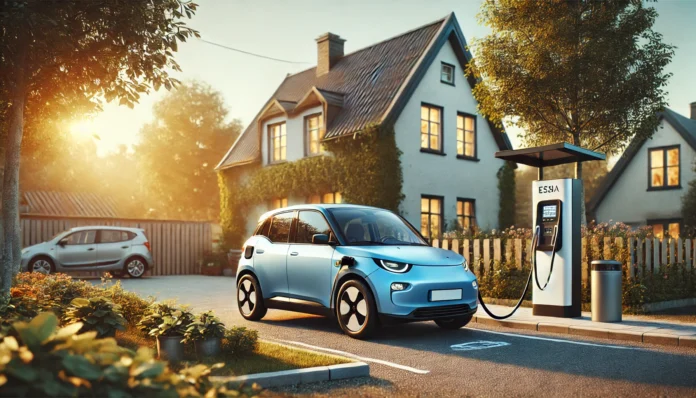The United States, once a beacon of technological advancement, finds itself in an odd paradox. While the nation boasts a history of groundbreaking innovations, its embrace of electric vehicles (EVs) has been lackluster. This consumer resistance to EVs is not merely a preference; it’s a mindset that is hindering America’s ability to lead in the global technological race.
The reasons for this EV aversion are multifaceted. Firstly, the perception of limited range and charging infrastructure has been a significant deterrent. Consumers, accustomed to the convenience of gasoline-powered vehicles, are hesitant to trade in familiar refueling for the potential inconvenience of finding a charging station. This range anxiety, as it’s often called, is a real concern, and until it is comprehensively addressed, EV adoption will continue to lag. [Read more…..]
Secondly, the upfront cost of EVs remains a stumbling block for many Americans. While the long-term savings on fuel and maintenance are undeniable, the initial price tag is often prohibitive. This financial barrier, coupled with a lack of compelling incentives, has made it difficult for EVs to gain traction in the mass market.
Furthermore, a deep-rooted cultural attachment to the internal combustion engine (ICE) persists. For many Americans, cars are more than mere transportation; they are symbols of freedom and individuality. The transition to EVs challenges this identity, leading to resistance.
The consequences of this EV apathy extend far beyond individual consumer choices. America’s reluctance to adopt EVs is hampering the nation’s ability to innovate in related technologies. For example, battery technology, a critical component of EVs, is essential for advancements in renewable energy storage, grid modernization, and even aerospace. By lagging in EV adoption, the U.S. risks falling behind in these vital areas.
America vs The World
Contrast this with countries like China and Norway, which have aggressively embraced EVs. China, for instance, has invested heavily in EV infrastructure and manufacturing, positioning itself as a global leader in the industry. Norway, with its generous incentives and early adoption, has achieved an EV market share that is the envy of the world.
In addition to transportation, the technological gap between the U.S. and other nations is evident in various sectors. Consider airports, where countries like Singapore and South Korea have implemented cutting-edge biometric security systems, automated baggage handling, and seamless passenger experiences. Meanwhile, many U.S. airports continue to operate with outdated infrastructure and processes.
Retail is another area where innovation is thriving elsewhere. Countries like Japan and South Korea have pioneered cashless societies, mobile payments, and advanced retail technologies. In contrast, the U.S. has been slower to adopt these innovations, with cash still prevalent in many stores.
Public transit systems also highlight the technological divide. Cities like Seoul and Tokyo boast efficient, reliable, and technologically advanced subway and rail networks. In comparison, many U.S. cities struggle with aging infrastructure, overcrowding, and technological shortcomings.
To reclaim its position as a global innovation leader, the U.S. must overcome its EV aversion. This requires a concerted effort to address range anxiety, reduce upfront costs, and foster a cultural shift towards electric mobility. Additionally, the nation must invest in research and development to accelerate battery technology and other related innovations.
By embracing EVs and the technologies that underpin them, the U.S. can not only reduce its environmental impact but also create new industries, jobs, and economic opportunities. The time to act is now. The future of transportation, and perhaps the nation’s technological leadership, depends on it.











